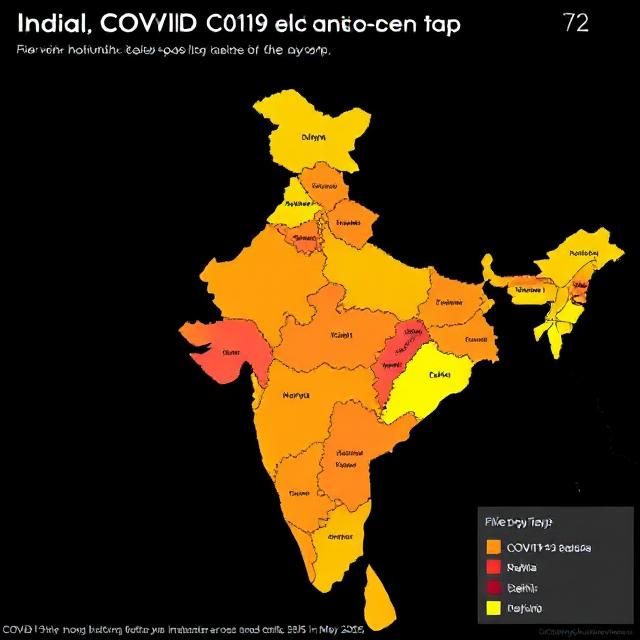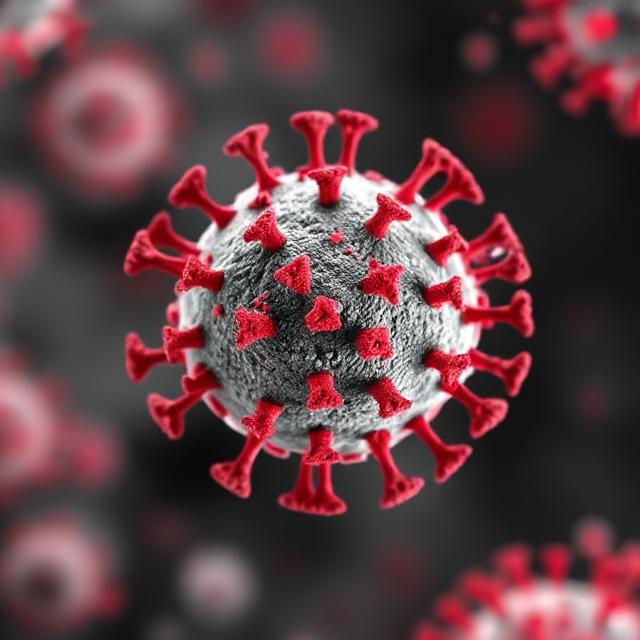🇮🇳 India: Active Cases and Regional Trends
As of May 30, 2025, India is experiencing a recurrence of COVID-19 instances.
The overall number of current cases now exceeds 1,000, with considerable rises reported in numerous states.
Maharashtra, Kerala, and Delhi are among the most affected regions.
In Maharashtra, 84 additional cases were reported on May 30, bringing the total since January 2025 to 681. Health officials have underlined that the majority of these cases are mild and have advised the public not to panic.

India COVID-19 heatmap showing active cases in Kerala, Maharashtra, Delhi – May 2025”
Delhi reported 104 active cases, with 19 individuals hospitalized.
The Chief Minister assured that hospitals are prepared, and new facilities have been opened to strengthen healthcare infrastructure.
Kerala remains the leader with over 430 ongoing cases, accounting for more than 40% of the national total. Other states, including as Bihar and Jharkhand, are experiencing rising case numbers, putting additional strain on healthcare resources.
Global Overview: Case Trends and Variants
Globally, COVID-19 cases have been increasing since February 2025, with over 147,000 new cases reported between February and May.
Despite a decrease in hospitalizations, the number of deaths has increased, indicating that COVID-19 is entering an endemic phase with seasonal outbreaks comparable to influenza.
The World Health Organization (WHO) has identified numerous variants of interest, including JN.1, which is now the most widespread in India.
Other variants being monitored include XEC, LP.8.1, and LB.1, with LP.8.1 and LB.1 indicating rising prevalence.
Preventive Measures and Outlook
To reduce the spread of COVID-19, health officials recommend the following actions.
Wearing masks in crowded or poorly ventilated environments.
Maintaining physical distance wherever possible.
Practice regular hand hygiene.
Avoiding unnecessary travel to regions with high case numbers.

Microscopic view of COVID-19 JN.1 variant – 2025 global health alert”
The Times of India+1ETHealthworld.com+1The Times of
While the current wave is not producing widespread severe illness, the increase in instances emphasizes the significance of maintaining attention and following public health guidelines.
Variant Spotlight: JN.1
The JN.1 variety, a sub-lineage of Omicron, has been designated a variety of Interest (VOI) by the WHO.
It has stronger transmissibility but does not appear to induce more severe sickness than prior strains. Symptoms are mostly mild and include fever, sore throat, and runny nose.
In India, JN.1 was first discovered in Kerala in December 2023. By January 2024, 682 instances had been documented from 12 states. Consultations on healthcare platforms such as Practo have increased tenfold, particularly in urban locations like Bengaluru, Delhi, and Hyderabad.
.The Times of India+1ETHealthworld.com+1The Financial Express
Experts encourage persons over the age of 60, those with comorbidities, and immunocompromised patients, such as cancer patients, to take particular measures.
While extra booster doses are not currently indicated for the general population, these high-risk groups should exercise caution.
Hindustan Times+1The Times of India+1

Microscopic view of COVID-19 JN.1 variant – 2025 global health alert”

